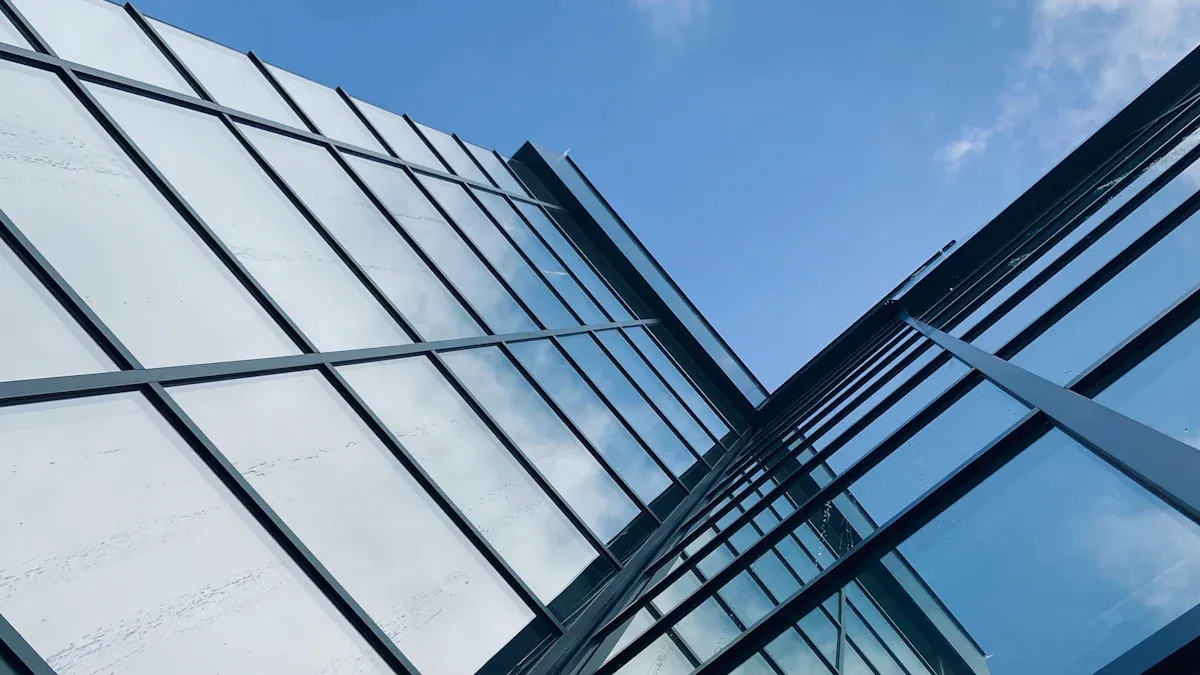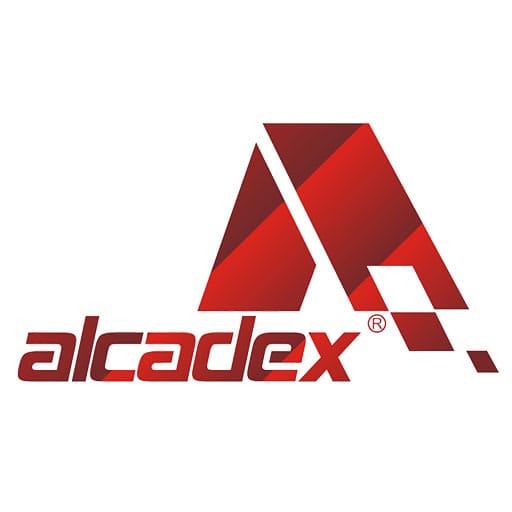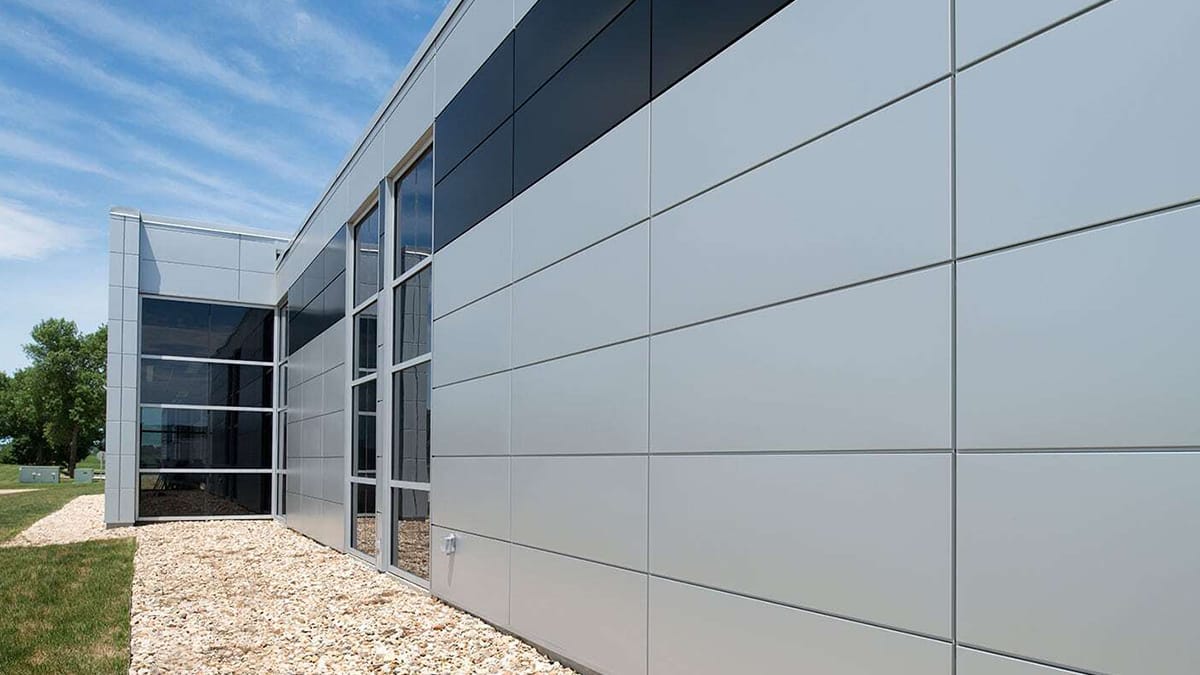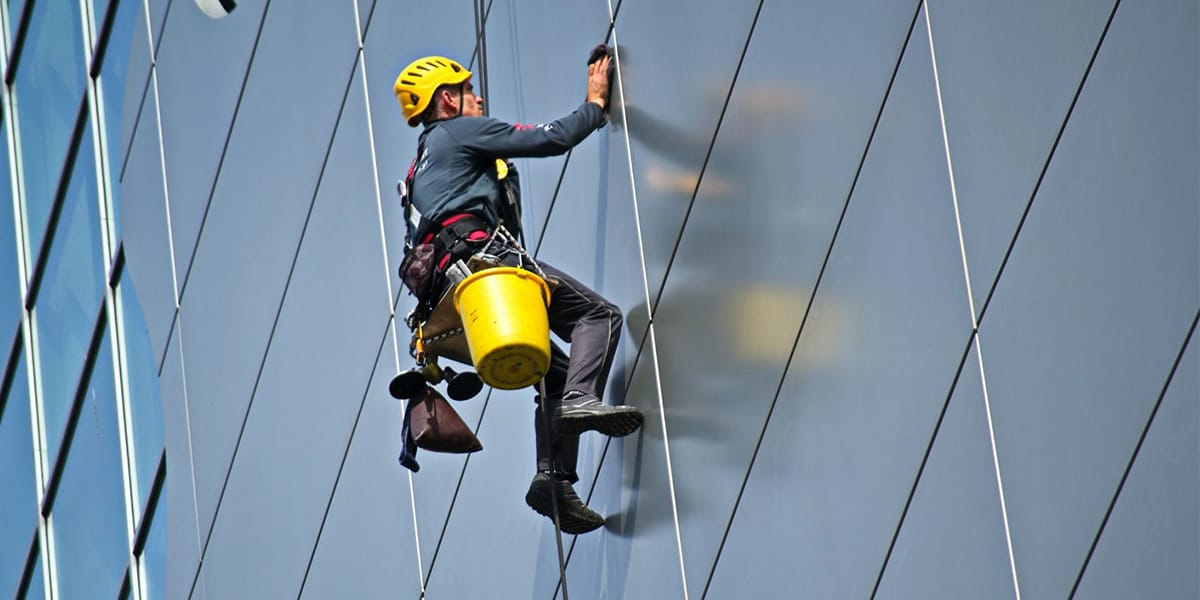
08 Sep Polycarbonate vs ACP: Which Is Better
Table of Contents
If you want a strong and light material for roofs or walls, polycarbonate is often the best choice for most jobs. It is tough and easy to put in, and it often costs less. ACP is better if you want a smooth look and more strength.
Tip: Think about how big your project is, how much money you have, and where it is before you choose.
Key Takeaways
Polycarbonate is light and strong. It is easy to put up. It works well for projects that need fast setup. It also lets in sunlight.
ACP comes in more colors and finishes. It lasts longer than polycarbonate. It is better at stopping fires. It is good for buildings that need to look nice and last long.
Polycarbonate costs less at first. But it needs more care. You might have to replace it sooner than ACP.
ACP costs more when you buy it. But it saves money later. It does not need much care. It keeps looking good for a long time.
Pick polycarbonate if you want a bright space. It is good if you need something that does not break easily. Choose ACP for strong walls. It is safer from fire. It also looks modern.
Quick Comparison
Key Differences
Polycarbonate and ACP are not the same. They have different features. The table below shows what makes each one special:
Feature | ACP (Aluminium Composite Panel) | Polycarbonate |
|---|---|---|
Durability | Handles hits well; can crack after a while | |
Cost | Cheaper to buy; costs more to keep up | |
Fire Safety | Great at stopping fire with special types | Not as good with fire; depends on kind |
Appearance | Comes in many colors and styles | |
Installation | Needs special tools and people | Easy and fast to put in |
Maintenance | Needs little care; simple to clean | Needs cleaning often and more care |
Tip: ACP is good if you want it to last and look nice for a long time. Polycarbonate is better if you want something light and easy to put in.
Key Similarities
Both materials have things in common. You can use them for many building jobs.
Each one lasts well in most weather.
You can use both for roofs, walls, and barriers.
People like both in new buildings because they are easy to shape and install.
ACP is best when you need it strong and want lots of design choices. Polycarbonate is great if you want light to go through or need it to handle hits.
Durability
Polycarbonate Durability
Polycarbonate is a good choice for tough places. It can last outside for 10 to 20 years. If you clean and check it often, it might last up to 30 years. Many companies give long warranties because they trust it. Polycarbonate works in very hot or cold weather, from -40°C to 85°C. It does not bend or break when the weather changes. It also stands up to salty air and wet heat, so it is good near the ocean or in the tropics. UV stabilizers help stop it from turning yellow or losing its clear look.
Tip: Polycarbonate is a smart pick if you need a roof or wall that can take hits and stay strong. It is much stronger than glass and does not break easily.
ACP Durability
ACP is great if you want something that lasts a long time. It does not fade, stain, or lose color, even after years outside. Special coatings like PVDF or nano-coatings help it stay clean and bright. You only need water or mild soap to wash it. ACP does not rust or rot, and it keeps its shape for many years. Many ACPs are also good at stopping fire, which makes buildings safer. ACP needs little care and lasts a long time, so it saves money for walls and cladding.
Note: ACP is a good choice if you want something that stays strong and looks nice with little work.
Cost
Upfront Cost
When you plan your project, you need to think about how much you will spend at the start. Polycarbonate usually costs less than ACP. You can buy polycarbonate sheets for a lower price. You also save money because polycarbonate is light and easy to install. You do not need special tools or skilled workers. This helps you finish your project faster and spend less on labor.
ACP costs more when you buy it. The panels use aluminum and special coatings, which raise the price. You may need experts to install ACP. The process takes more time and needs more care. You pay more for labor and tools. If you want a fancy look or custom colors, the price goes up.
Here is a quick table to help you compare:
Material | Sheet Price | Installation Cost | Total Upfront Cost |
|---|---|---|---|
Polycarbonate | Low | Low | Low |
ACP | High | High | High |
Tip: If you have a small budget or want to finish your project quickly, polycarbonate is a smart choice.
Long-Term Value
You should not only look at the first price. Think about how much you will spend over the years. Polycarbonate needs more cleaning and care. It can get scratches or turn yellow if you do not protect it. You may need to replace sheets after many years. This adds to your total cost.
ACP gives you better value over time. The panels last longer and keep their color. You do not need to clean them often. They resist stains and weather. You spend less on repairs and replacements. ACP saves you money in the long run, especially for big buildings or places with harsh weather.
Polycarbonate: Lower first cost, higher upkeep.
ACP: Higher first cost, lower upkeep.
Note: If you want to save money over many years, ACP is a better investment. If you need a quick and cheap solution, polycarbonate works well.
Appearance
 Color Options
Color Options
You can pick from many colors for both materials. Polycarbonate comes in clear, white, and some colored shades. Some panels change color when light hits them. ACP has even more color choices than polycarbonate. You can pick from hundreds of colors using RAL color charts. Some companies let you order special colors for your project.
Here is a table to help you compare:
Material | Color Options |
|---|---|
Polycarbonate | Clear, White, Colored, Tinted, Iridescent |
RAL color charts, Custom colors |
Tip: If you want your building to look special, ACP has more colors. Polycarbonate is good if you want light to shine through or just need simple colors.
Surface Finish
The finish changes how your building looks and feels. Polycarbonate panels can be matte, non-glare, or have a bumpy feel. Some are made to not scratch or get static. Some block UV light or stop bullets. These finishes help keep you safe and control light.
ACP panels have even more finish choices. You can pick shiny, soft, or colorful coatings. Some look like wood, stone, or metal. Mirror finishes make rooms look bigger. Some panels clean themselves with rain.
Here is a table showing finish options:
Material | Finish Options |
|---|---|
Polycarbonate | Matte, Non-glare, Pebble, Abrasion resistant, Anti-static, Bullet resistant, UV filtering |
ACP | Fluorocarbon, Polyester, Acrylic, Multi-color, Iridescent, Embossed, Brushed mirror, Nano self-cleaning, Wooden, Stone, Metallic, Mirror |
Different finishes fit different styles. Matte ACP is good for simple, modern buildings. Shiny and mirror finishes are great for bold designs. Wood and stone finishes look natural or classic. Polycarbonate’s smooth finish lets in lots of light, so it is good for bright spaces.
Note: You can pick a finish that matches your style. ACP gives you more choices for fancy or special looks. Polycarbonate is best if you want light and safety.
Installation
Polycarbonate Installation
You can install polycarbonate panels quickly. The panels are light, so you can carry them easily. You do not need special tools. Most people use basic hand tools like drills and screwdrivers. You can cut the panels with a saw. You can fix them to metal or wood frames with screws or bolts. You should leave space for the panels to expand when the weather changes. You can use sealing strips to keep water out. You do not need to hire experts for most jobs. Many homeowners finish small projects by themselves.
You do not face many installation problems with polycarbonate. The panels do not crack or break during installation. You do not need to worry about peeling or color changes. You can clean up after the job with water and a soft cloth. You can finish the work fast and move on to the next step.
Tip: Always wear gloves and safety glasses when you work with polycarbonate panels.
ACP Installation
You need to plan more when you install ACP panels. The panels are strong, but you must use the right tools. You should hire skilled workers for big jobs. You need to use special adhesives and fasteners. You must pick the correct glue for outdoor use. If you use quick-drying glue meant for indoor jobs, the panels can peel off in rain or heat. You should use fluorocarbon resin coatings for outdoor panels. These coatings stop color changes and keep the panels looking new.
You must choose a good base for ACP panels. If you use wood or high-density boards outside, they can break down and cause the panels to bend or warp. You should use metal frames for outdoor jobs. You must seal the gaps between panels neatly. If you use the wrong tape or film, the seal can tear and look messy. You should check the work often to make sure the panels stay flat and bright.
Here is a table showing common installation challenges:
Challenge | What Happens |
|---|---|
Peeling of ACP Panels | Wrong glue causes panels to come loose outdoors |
Surface Deformation | Bad base materials lead to bending or warping |
Poor Sealing | Wrong tape or film makes gaps look messy |
Discoloration | Indoor coatings fade outdoors; use outdoor types |
Polycarbonate Panels | No major installation problems reported |
Note: You can avoid most problems by using the right materials and following the steps carefully.
Maintenance
 Cleaning
Cleaning
Keeping your panels clean helps them last longer and look better. You should follow special steps for each material to avoid damage.
For polycarbonate panels:
Avoid abrasive or high alkaline cleaners.
Never use sharp objects or gasoline.
Do not leave cleaners on the surface for long; rinse right away.
Avoid cleaning in direct sunlight.
Test your cleaning method on a small hidden spot first.
Do not clean the panels when they are dry. Dust or sand can scratch the surface.
Avoid using high-pressure washers close to the panel.
For ACP panels:
Use only mild cleaners. Do not use strong alkaline or acid detergents.
Avoid abrasive materials and do not scrub the painted surface.
Clean the panels when the sun is not shining directly on them.
Test your cleaning method on a small spot before cleaning the whole panel.
Tip: Regular gentle cleaning keeps both polycarbonate and ACP panels looking new and working well. Always follow the manufacturer’s instructions for best results.
Repairs
You will not need to repair ACP panels often. These panels resist weather, corrosion, and UV rays. This strong build means you spend less time and money fixing them, especially in commercial buildings. Polycarbonate panels can get scratches or small cracks if hit hard or cleaned the wrong way. You can fix minor scratches with special polish or by replacing a single sheet. If you see yellowing or damage, you may need to replace the panel.
Most of the time, you will only need to check your panels for damage once or twice a year. If you spot a problem early, you can fix it before it gets worse. This simple routine helps both materials last longer and keeps your building looking its best.
Note: Quick checks and gentle cleaning help you avoid big repairs. If you see major damage, talk to a professional for advice.
Lifespan
Polycarbonate Lifespan
You want your panels to last as long as possible. Polycarbonate sheets can serve you well for many years if you take care of them. Most high-quality polycarbonate panels with UV protection last over 15 years. Some even reach 20 years or more when you clean them regularly and install them correctly. If you choose single-layer panels without UV protection, you may see yellowing, brittleness, or loss of clarity in just 5 to 10 years. Sunlight and weather play a big role in how long your panels stay strong.
UV rays can make polycarbonate yellow and brittle if you do not use protected sheets.
Humidity and moisture can cause mold and algae, which block light and weaken the material.
Good ventilation and regular cleaning help your panels last longer.
You should check your panels often for dirt or damage. Remove any buildup and make sure the panels stay dry. If you live in a place with strong sunlight, always pick UV-protected polycarbonate. This choice helps you avoid early replacement and keeps your building looking bright.
Tip: Proper installation and care can help polycarbonate panels last up to 20 years or more.
ACP Lifespan
ACP panels offer a long service life, especially when you select the right coating. The warranty period depends on the type of ACP you use. You can see the typical guarantees in the table below:
Panel Type | Warranty Period |
|---|---|
General ACP Panels | 3-5 years |
PVDF Coating ACP | 20 years guarantee |
PE Coating ACP | 5-8 years guarantee |
If you choose PVDF-coated ACP panels, you get up to 20 years of reliable performance. These panels resist fading, stains, and weather damage. PE-coated panels last 5 to 8 years, while general ACP panels may need replacement after 3 to 5 years. You should always match the panel type to your project needs and local climate.
Regular cleaning and inspection help ACP panels stay strong and attractive. You do not need to worry much about rust or rot. If you want a panel that lasts for decades, PVDF-coated ACP is a smart choice.
Note: Always check the warranty and coating type before you buy ACP panels. This step helps you plan for long-term value.
Fire Safety
Polycarbonate Fire Risk
When you pick building materials, you must think about fire safety. Polycarbonate sheets can catch fire, but some are made to slow flames. Flame-retardant polycarbonate panels can meet strict fire safety rules, like UL 94 V-0 or V-2. These ratings mean the sheet stops burning fast after the flame is gone. Some sheets also meet UL 972 for burglary-resistant glazing, which adds more safety. These features help you follow local building codes, such as ICC and IBC.
Note: Polycarbonate panels do not all have the same fire resistance. Always check the label or ask your supplier about the fire rating before buying.
If fire safety is very important, choose sheets with a high fire rating. This helps keep your building and everyone inside safe.
ACP Fire Resistance
Aluminum Composite Panels (ACP) can be very fire resistant, but it depends on the type. Some ACPs, like B1 flame retardant panels, pass national fireproof tests. These tests use the GB8624-2012 standard to check how well a material resists burning. B1 grade ACPs have high fire safety and work well for many buildings.
Some ACPs have special fire retardant additives in their coatings. These additives help slow flames and make the panels safer. Not all ACPs have the same fire resistance. Always look for panels that meet your area’s fire safety rules.
B1 grade ACP: High fire resistance, good for most buildings.
Standard ACP: Lower fire resistance, not for high-risk places.
Tip: Ask your supplier for test reports or certificates before picking ACP panels for your project.
Best Uses
When to Choose Polycarbonate
Pick polycarbonate if you need strong panels that let in light. This material is good for places where you want sunlight but also need protection. Polycarbonate helps make spaces bright, safe, and modern. It also keeps heat in or out, which saves energy.
Here is a table showing how polycarbonate is used in buildings:
Application | Description & Benefits |
|---|---|
Facades & Cladding | Makes buildings look modern and keeps them warm or cool. |
Indoor Partitions & Office Dividers | Light and safe, good for private and sunny rooms. |
Curved Skylights | Bends easily, lets in light, and keeps out rain and heat. |
Canopies and Pergolas | Looks nice, keeps water out, gives shade, and lets light in. |
Parking Structures | Brings in daylight, helps people see better, and saves energy. |
Swimming Pool Enclosures | Strong and blocks UV rays, keeps pools safe and comfy. |
Illuminated Signage & Backlit Walls | Good for signs that glow or stand out. |
Stadium Roofs & Sports Venues | Light and tough, lets in light for big spaces. |
Stops heat from coming in, keeps buildings cool, and saves money. | |
Noise-Reducing Facades | Blocks sound, makes buildings quieter near busy places. |
Sustainable Greenhouses | Helps plants grow with light and warmth, better than glass. |
Privacy Screens and Partitions | Gives privacy but still lets in light, inside or outside. |
Facades with Integrated Solar Panels | Works with solar panels to make energy and keep heat in or out. |
Tip: Use polycarbonate if you want panels that are light, strong, and let in lots of sunlight. It works well for greenhouses, skylights, and places where saving energy and safety matter.
Polycarbonate is great for places with tough weather or where things might get hit. It also helps lower lighting costs. If you care about saving energy, polycarbonate keeps buildings bright and comfy.
When to Choose ACP
Pick ACP if you want your building to look modern and last a long time. ACP panels are good for both outside and inside walls. They make buildings look smooth and stylish. You can choose from many colors and textures.
Here are some projects where ACP works best:
Malls and tall office buildings use ACP for strong, modern walls.
Homes and apartments use ACP for inside walls, ceilings, and decorations.
Hospitals, schools, airports, and train stations use ACP for looks and strength.
Big projects use ACP because it is light, lasts long, and is easy to install.
Green buildings use ACP because it can be recycled and helps save energy.
Note: ACP panels give you many choices for design, help stop fires, and block noise. You can pick colors and finishes that fit your style.
ACP is a good choice if you want your building to look new for years. It is also helpful where fire safety and easy cleaning are important. Famous buildings like the Empire State Building and The Wave in Holland use ACP for beauty and strength.
When you choose between polycarbonate and ACP, think about what you need most. Polycarbonate is best for saving energy, letting in light, and stopping damage. ACP is better if you want lots of colors, a smooth look, and strong fire safety.
When you choose between polycarbonate and ACP, focus on what matters most for your project. If you want lower upfront cost and need light to pass through, polycarbonate works well. For long-term value, strong fire safety, and a modern look, ACP stands out.
Consider impact resistance, heat resistance, and your budget.
Think about how much maintenance you want to do.
For the best results, talk to a building expert before you decide.
FAQ
What is the main difference between polycarbonate and ACP?
Polycarbonate lets in more light than ACP. ACP has more colors and finishes to pick from. Polycarbonate is great for skylights and greenhouses. ACP is better for walls and modern building styles.
Can you use polycarbonate and ACP outdoors?
Both materials work outside. Polycarbonate stands up to sun and weather. ACP can handle rain, wind, and sun if it has the right coating. Always read the label to make sure it is safe for outdoor use.
Which material is easier to install?
Polycarbonate panels are easy to put in with simple tools. Most people can do small jobs by themselves. ACP panels need experts and special glue. Polycarbonate saves you time during installation.
How do you clean polycarbonate and ACP panels?
Clean both with a soft cloth and gentle soap.
Do not use strong cleaners or rough sponges.
Rinse with water and dry with a soft towel.
Always check the cleaning guide from the maker.
Are polycarbonate and ACP safe in a fire?
Polycarbonate can slow down flames if you pick flame-retardant sheets. ACP panels with a B1 fire rating are good at stopping fire. Always ask for fire safety papers before you buy.



 Color Options
Color Options Cleaning
Cleaning